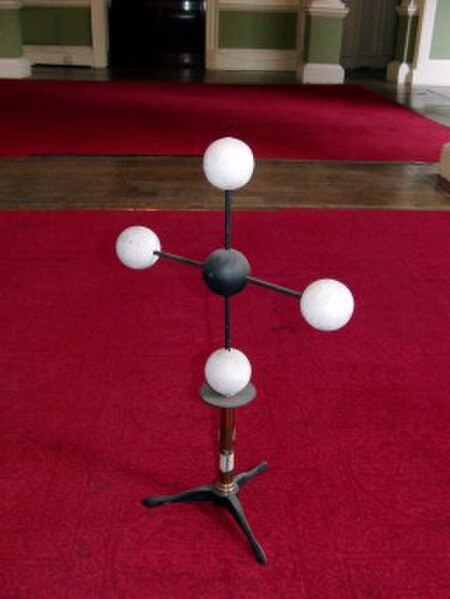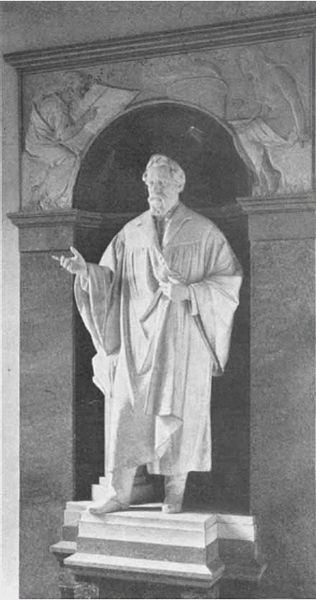August Wilhelm von Hofmann
August Wilhelm von Hofmann was a German chemist who made considerable contributions to organic chemistry. His research on aniline helped lay the basis of the aniline-dye industry, and his research on coal tar laid the groundwork for his student Charles Mansfield's practical methods for extracting benzene and toluene and converting them into nitro compounds and amines. Hofmann's discoveries include formaldehyde, hydrazobenzene, the isonitriles, and allyl alcohol. He prepared three ethylamines and tetraethylammonium compounds and established their structural relationship to ammonia.
August Wilhelm von Hofmann
Hofmann, 1846
Hofmann's methane model
Monument to Hofmann at Berlin, destroyed in 1944 by British air raid
Aniline is an organic compound with the formula C6H5NH2. Consisting of a phenyl group attached to an amino group, aniline is the simplest aromatic amine. It is an industrially significant commodity chemical, as well as a versatile starting material for fine chemical synthesis. Its main use is in the manufacture of precursors to polyurethane, dyes, and other industrial chemicals. Like most volatile amines, it has the odor of rotten fish. It ignites readily, burning with a smoky flame characteristic of aromatic compounds. It is toxic to humans.
Sample of 2,6-diisopropylaniline, a colorless liquid when pure, illustrating the tendency of anilines to air-oxidize to dark-colored products.
Aniline can react with bromine even in room temperatures in water. Acetyl chloride is added to prevent tribromination.
Cake of indigo dye, which is prepared from aniline.







